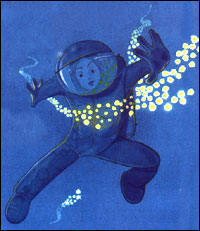
How do the chemicals in marijuana change the way a person sees, hears, smells, tastes, and feels things?
When someone uses marijuana, these chemicals travel through the bloodstream and quickly attach to special places on the brain's nerve cells. These places are called receptors, because they receive information from other nerve cells and from chemicals. When a receptor receives information, it causes changes in the nerve cell.
The chemical in marijuana that has a big impact on the brain is called THC—tetrahydrocannabinol. (Whew! Try saying that 10 times fast.) Scientists recently discovered that some areas of the brain have a lot of THC receptors, while others have very few or none. These clues are helping researchers figure out exactly how THC works in the brain.
Marijuana may cause some parts of the body to react in different ways.
What do you know about:
- Rapid Heartbeat—up to how many beats per minute? Is it 100, 130 or 160?
- Dilated blood vessels—can be seen in what part of the body? Is it the face, the eyes, the feet?
- A feeling of panic—accompanied by what kind of sensations? Is it sweating, dry mouth, breathing difficulties or all of these?
- Daily cough and more frequent chest colds very much like who? Is it tobacco smokers, construction workers or the elderly?
Answers
- Marijuana can speed the heart rate up to 160 beats per minute.
- Dilated blood vessels make the whites of the eyes turn red.
- Panic feelings may be accompanied by sweating, dry mouth and trouble breathing.
- Tobacco smokers.




